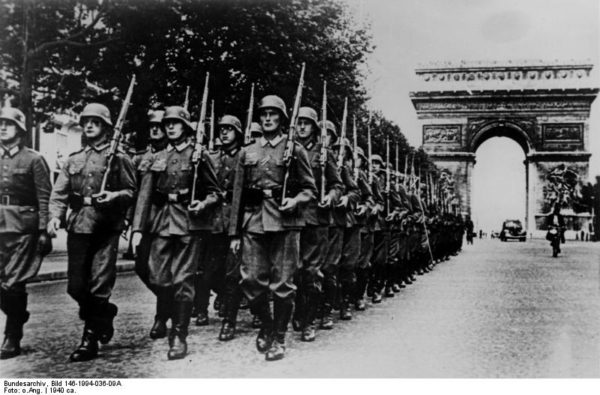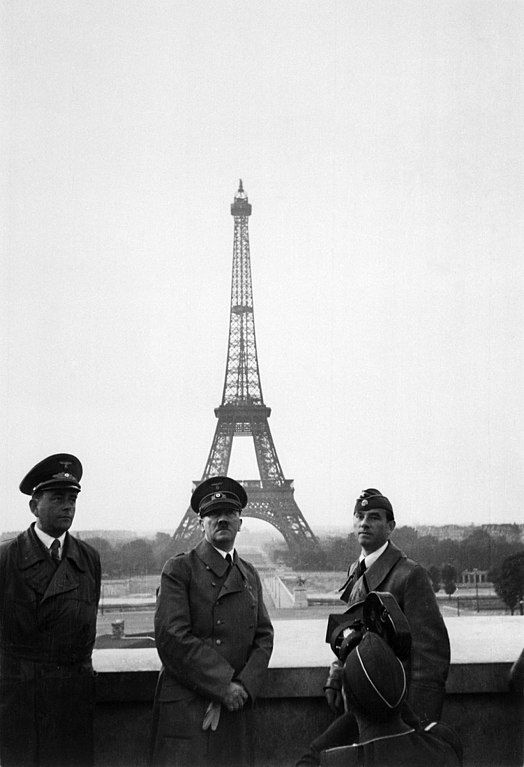
From 1942 to 1944, German occupation forces in France sealed off and systematically looted at least 38,000 “abandoned” apartments in Paris that were owned by Jews who had been forced to flee, or who had been deported to Nazi concentration camps. The pillaged furnishings were then shipped to Eastern Europe or Germany. After the war, the French government established a special service to facilitate their return.
Shannon Fogg, a professor of history at Missouri University of Science and Technology, has written a substantive account of this grand theft, Stealing Home: Looting, Restitution and Reconstructing Jewish Lives in France, 1942-1947, published by Oxford University Press. It’s based on oral histories, memoirs, restitution claims, social workers’ reports, newspaper stories and government documents.

As she points out in the introduction, “The literature on looting and restitution is growing, but many areas remain unexplored. Until the 1990s, many scholars viewed property issues as a secondary byproduct of the Holocaust rather than as an object of study in itself. More recently, historians have shown the central role that economic concerns (including the confiscation of property) played in facilitating the Holocaust. Seizing property was vital to the dehumanizing effect of persecution and was closely linked to emigration and deportation.”
Germany, following its invasion of France in 1940, occupied 60 percent of its land mass, including the Atlantic coastline, the industrial northern region, the agricultural plains and Paris. The southern, unoccupied zone, governed by Marshall Philippe Petain, was situated in the spa town of Vichy.
Sixty percent of the Jews in France fell under Vichy’s authority. Starting in August 1940, Vichy issued a series of antisemitic decrees that drastically limited Jewish rights. Jewish assets, including homes and businesses, were expropriated under Aryanization edicts. Final decisions on Aryanization rested with the Germans.
The prewar Jewish population of Paris, which had been about 220,000 before 1940, was reduced to approximately 150,000 — 86,000 French Jews and 65,000 foreign Jews. Only 25 percent of Paris’ Jewish population came from long-established French families. The rest were either recent arrivals or first-generation French citizens.

In the spring of 1942, the Germans launched a coordinated assault on Jewish homes and personal possessions. By one estimate, nearly 25,000 Jewish Parisian families, consisting of about 100,000 people, were evicted from their apartments. By then, the Nazis had already looted the major Jewish art and book collections in France.

Alfred Rosenberg, a major figure in the Nazi regime, was the mastermind of what would be known as Operation Furniture. In December 1941, he wrote a letter to Adolf Hitler asking permission to strip uninhabited Jewish homes in Western Europe of their furnishings and personal effects. Hitler agreed. Within a few a months, the first trainloads of pillaged goods were en route to new destinations. They were sent to Nazi-occupied Eastern Europe, which suffered from a severe shortage of furniture, and to Germany, where German civilians had been bombed out of their homes by Allied air raids.

By Fogg’s estimation, the operation required about 27,000 freight cars. “While the looting associated with French cultural objects largely affected wealthy French Jews, all Jews — French and foreign, rich or poor — were potential targets of the Operation Furniture,” she writes.
In Paris, the first batch of furniture was looted following the roundup of 13,000 foreign Jews in July 1942. “The Germans literally took everything they found inside the apartments,” says Fogg. “Furniture, bedding, family photos, knickknacks, personal papers, rugs, light fixtures and kitchen sinks.”
The operation, she adds, was no secret to Jews living in Paris. “The stripping of apartments took place openly and was noted by the city’s Jewish residents.”
It created consternation within the French administration, which viewed the removals as impinging on its right to liquidate the possessions of French citizens. The French protested and called for an end to the operation, “not because the French government opposed the action in principle, but rather because it did not benefit the state.”
The Free French government in exile denounced it, declaring it to be invalid.
After the German occupation, many Jewish survivors returned to their emptied apartments. A smaller number discovered that their flats had been untouched. In still other instances, their apartments had been claimed by former prisoners of war, political deportees and bombing victims.
Jews trying to recover their apartments sometimes faced an antisemitic backlash. In one instance, in the Marais district, 400 to 500 demonstrators shouted, “France for the French” and “Death to the Jews.”

In 1945, the French provisional government created a Restitution Service to ensure that stolen goods would be returned to their rightful owners, but the number of items recovered was extremely small. Still, as she points out, attempts by Jews to reclaim their possessions were part of an effort to rebuild their political and social inclusion in postwar France.
Fogg, in closing, observes, “The French provisional government knew that something had to be done to help war victims, but the insistence on equality and fairness created a bureaucratic procedure that often led to further bitterness and disappointment. Coupled with lingering antisemitism, which was regularly expressed through conflicts over access to material possessions such as apartments, the slow process and small number of restitutions did little to repair the wrongs of the past. Indeed, many Jewish victims turned to the Jewish community for aid rather than relying on the government.”
